1963-67 CORVETTE

Is there anyone who doesn't like the Corvette Sting Ray? Probably not. This was, after all, the most changed Corvette since Chevrolet first wheeled out its two-seat sports car in 1953, and a stunning piece of work by any standard -- one reason it still dominates the automotive consciousness of a generation. It was also the most popular Corvette up to 1963, setting much higher new sales records in each of its five years save swan-song '67, though it helped to have the first production Corvette coupe as a running mate for the traditional convertible.
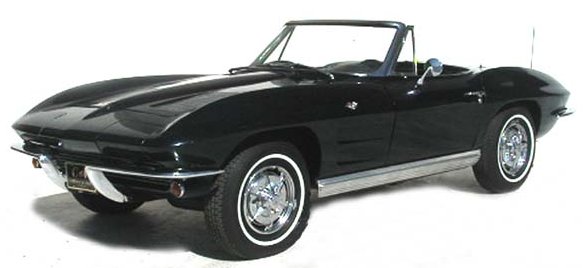
There's never been enough of either to go around. Used-car values bottomed out and headed up less than a decade after the Sting Ray's knock-'em-dead debut, making this one of the first postwar cars to exceed its original list price on the collector market. Cynics said the fast turnaround reflected the Corvettes that followed. In fact, many still regard the Sting Ray as simply the best Corvette ever.
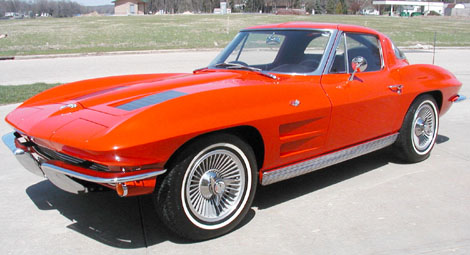
The Sting Ray was very much stylist Bill Mitchell's car, the first Corvette that owed nothing to his legendary predecessor, Harley Earl, the founding father of General Motors Styling. It originated in late 1959 with the XP-720 program that drew from at least three earlier experimental projects. The first was the so-called "Q-Corvette," begun in 1957 as a smaller, more radical sports car sharing a rear transaxle, independent rear suspension, and all-disc brakes with a line of large, rear-engine sedans being planned for 1960. Only a fastback coupe was contemplated, and its styling, by the same Bob McLean who'd laid out the first Corvette, was amazingly predictive of the future of Sting Ray's.
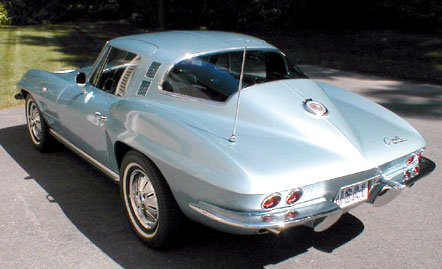
The entire Q-program was soon shelved as too complicated and too costly, but Corvette engineers led by Zora Arkus-Duntov continued toying with rear-engine designs even as Chevy introduced one in its first compact, the new-for-'60 Corvair. The advent of that car, plus Duntov's work with the experimental open-wheel CERV I single-seater, prompted a rear-engine Corvette proposal designed around the Corvair's air-cooled flat-six power package. Again, however, GM managers just couldn't see the expense.
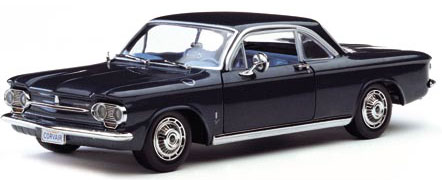
Mitchell, meantime, had spirited away the development "mule" from the abortive Sebring Super Sport project, the long-distance racing Corvette consigned to the corporate attic after the Automobile Manufacturers Association's 1957 "anti-racing" edict. Mitchell decided to refurbish the car and campaign it on his own. Assistant Larry Shinoda adapted Q-Corvette lines to create a new open body for what Mitchell called the Stingray Special, built in his bootleg-projects "Studio X" area at the GM Tech Center in Warren, Michigan. Dr. Dick Thompson, one of the winningest Corvette pilots in Sports Car Club of America competition, was signed to drive it in C-Modified events, then dominated by prestigious European machines. "The flying dentist" promptly ran away with the class championship in 1959 and '60.
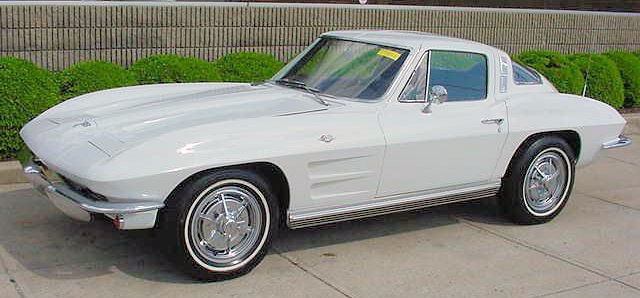
Though it never raced as a Corvette, Mitchell's car was obviously a GM effort. Because it made a big public impression, its styling figured heavily in XP-720, which sought to deliver a new production Corvette with more passenger and luggage room, better ride and handling, and even higher performance.
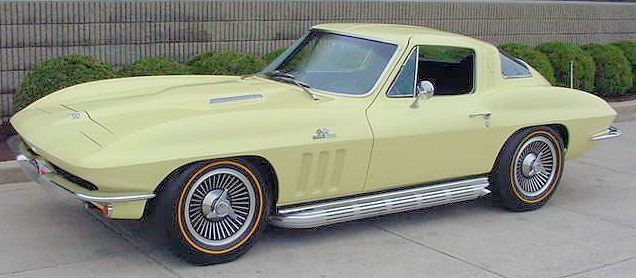
The starting point was a clean-sheet chassis reflecting lessons learned from all those earlier experiments. Despite the Corvair's arrival, a conventional drivetrain layout was never in doubt. Passengers were again placed relatively far to the rear so that the engine/transmission package could sit behind the front-wheel centerline for even front/rear weight distribution (which ended up at 47/53 percent). To further enhance roadability, the wheelbase was trimmed four inches from that of previous Corvettes, to 98 inches, and the center of gravity was lowered by having passengers ride within the frame rather than on top of it. For improved torsional rigidity and optimum driveline placement, the old Fifties-fashion X-brace frame was discarded for a new ladder-type design with five crossmembers. At first it was a little too stiff, yielding an unduly harsh ride. The production unit was made less rigid but still stronger than needed.
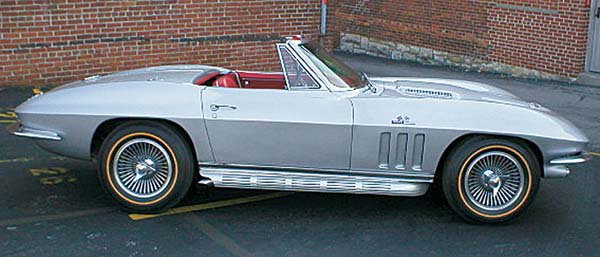
But the big news was independent rear suspension, which Duntov sold to cost-conscious GM managers by saying it would help sell 30,000 Corvettes a year. His Sting Ray design employed a frame-mounted differential with U-jointed halfshafts linked by a transverse leaf spring, much as on CERV I. The spring bolted to the back of the diff case, which was carried on rubber-cushioned struts that lessened ride harshness and increased grip, especially on rougher roads. A control arm extended laterally and slightly forward from each side of the case to a hub carrier, with a trailing radius rod behind. The halfshafts functioned as upper control arms. The lower arms also controlled vertical wheel motion, while the trailing rods took care of longitudinal loads. Being considerably lighter than Corvette's old solid axle, the new irs brought a significant reduction in unsprung weight.
Front suspension retained unequal-length upper and lower A-arms on coil springs concentric with the shock absorbers, plus a standard anti-roll bar. Steering remained recirculating-ball, but with a new shock-absorbing damper and faster gearing (19.6:1, previously 21.0:1). Tie rods could be moved to secondary mounting holes in the steering arm to quicken gearing even further (to 17.1:1) and reduce turns lock-to-lock from 3.4 to just 2.9. Hydraulically assisted steering would be a first-time Corvette option except on cars with the two most powerful engines, and would have the faster ratio.
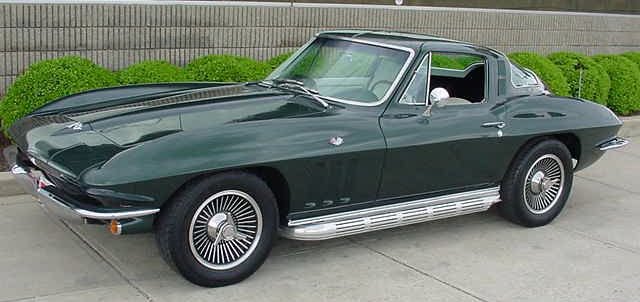
Four-wheel cast-iron drum brakes of 11-inch diameter were also retained, but they were self-adjusting now and wider at the front to increase effective braking area and thus stopping power. Sintered-metallic linings were again optional, and so were finned aluminum ("Al-Fin") drums that made for even less unsprung weight, plus faster heat dissipation and thus better fade resistance. Power brakes would be another new Corvette option, along with air conditioning and leather upholstery.
Evolutionary technical changes included positive crankcase ventilation, a smaller flywheel and, as elsewhere in Detroit, a more efficient electrical alternator instead of the old-fashioned generator.
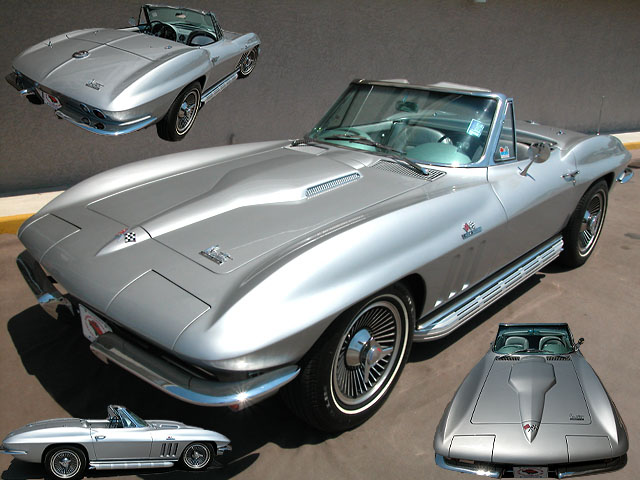
Chevrolet's masterful small-block V-8, the heart of Corvette power since 1955, had been enlarged from 283 to 327 cubic inches for 1962. There were four versions for Corvette, and all were retained for the Sting Ray, along with the previous three transmissions and six axle ratios. Carbureted engines again offered 250, 300, and 340 horsepower. As before, the first two employed hydraulic lifters, mild cam, forged-steel crankshaft, 10.5:1 compression, single-point distributor, and dual exhausts. The 340 got its extra power from a bigger four-barrel Carter carb, plus larger intake valves and exhaust manifolds. A 360-bhp fuel-injected stormer again topped the list. Repeating as standard transmission was the familiar three-speed manual, but neither it nor the optional Powerglide automatic was very popular. As ever, the preferred gearbox was the Borg-Warner manual four-speed, which carried wide-ratio gears with the 250- and 300-bhp engines, close ratios with the other two. Standard final drive for three-speed and Powerglide cars was 3.36:1. Four-speeders came with a 3.70:1 gearset, but 3.08, 3.55, 4.11, and 4.56:1 were available.
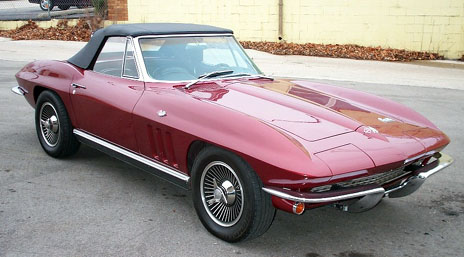
Like the mechanical layout, XP-720 styling was never in doubt. Even the first tryouts were nothing so much as Mitchell's racer with a fastback roof a la Q-Corvette. This shape was locked in quickly, then carefully refined. A functional space buck was completed by early 1960, coupe styling all but finished by April, and the interior finalized by November. Only in the fall of 1960 did designers turn to a new convertible and, still later, its detachable hardtop. Practical matters like glass curvature and tooling constraints dictated final revisions, but so did aerodynamics. Unusual for any car in those days, both body types were exhaustively tested as 3/8th-scale models in the Cal Tech wind tunnel.
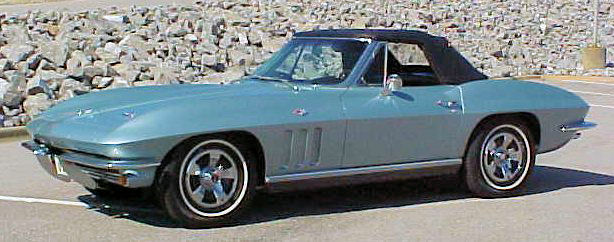
Though fiberglass body panels were retained as on previous 'Vettes, the Sting Ray had nearly twice as much structural steel for greater longevity and quietness. The resulting extra weight was balanced by a reduction in fiberglass thickness so that both new Sting Rays actually weighed a bit less than the old convertibles. Passenger room was just as good despite the tighter wheelbase, and the girded cockpit was stronger and thus safer.
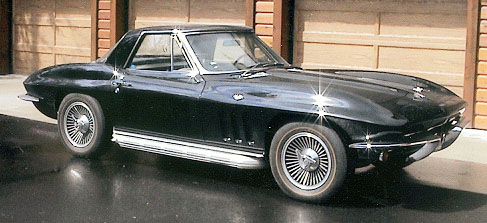
The Sting Ray's most obvious departure from Corvette tradition was the futuristic new fastback coupe with distinctive "boat-tail" rear deck and unique split rear window. The latter, a compound-curve "saddleback" derived from Q-Corvette styling proved quite controversial. Duntov and, later, some automotive journalists opposed it for hindering driver vision astern. Mitchell countered that "if you take that off, you might as well forget the whole thing." He was referring to a full-length "spine" that began with a central hood bulge, then continued down the roof, through the window, and onto the tail. Mitchell got his split-window and "backbone," then relented after one year with a one-piece backlight, having in the meantime created the most collectible Sting Ray of all.
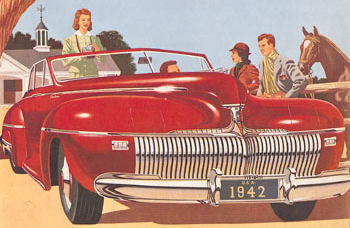
The rest of the styling package was equally exciting. Quad headlamps were retained but newly hidden, the first U.S. car with this feature since the 1942 DeSoto (shown above). They lived in rotating housings that matched the pointy new front when the "eyes" were closed. An attractive beltline dip at the door trailing edges paid homage to Harley Earl. Coupe doors were cut up into the roof, recalling the abortive Tucker, though they were just as practical for easing entry/exit in a low-slung closed car. Many disliked the dummy vents on the hood and the coupe's rear pillars. Functional ones were planned, but were nixed by cost.
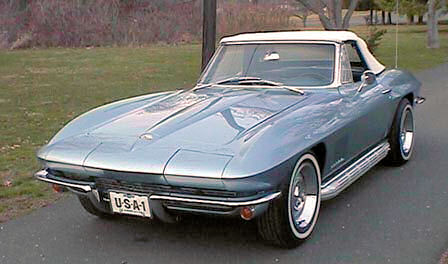
Inside was a new interpretation of the "twin-cowl" Corvette dash used since 1958. One designer recalled that it "was widely criticized at the time," but defended it as "a very fresh approach to two-passenger styling." It was certainly more practical, bringing a roomy glovebox with a proper door, plus an improved heater, new cowl-ventilation system, and a full set of easily read round gauges dominated by a huge speedometer and tachometer, all dead ahead of the driver. Corvette's "control tower" center console was slimmed down but still mounted a clock and an unusual new vertically situated radio with suitably oriented dial.
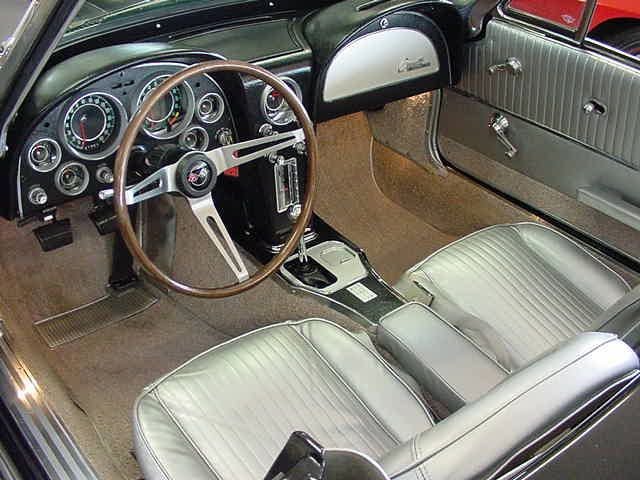
Despite its greater luggage space, the Sting Ray lacked a trunklid (also precluded by cost), which was criticized as much as the coupe's divided backlight. Cargo had to be wedged in behind the seats; on the convertible, you also had to disconnect the folded top from its flip-up tonneau panel to gain access. The spare lived in a drop-down cradle beneath the rear-mounted gas tank, which now held 20 gallons instead of 16. The familiar big round deck emblem was newly hinged to double as a fuel filler flap.
GM was still nominally abiding by the AMA's "racing ban," but this was the best-handling Corvette yet and Duntov knew it would be raced. Giving competitors the best possible chance for victory was the rationale behind a new Regular Production Option, Z06. You first ordered a fuelie coupe with four-speed and Positraction limited-slip differential, then forked over a formidable $1818.45 in exchange for the best Al-Fin power brakes with sintered linings, plus heavy-duty front stabilizer bar, shocks, and springs, and a long-distance 36.5-gallon fuel tank. The package was listed for the convertible, but no such cars were built.
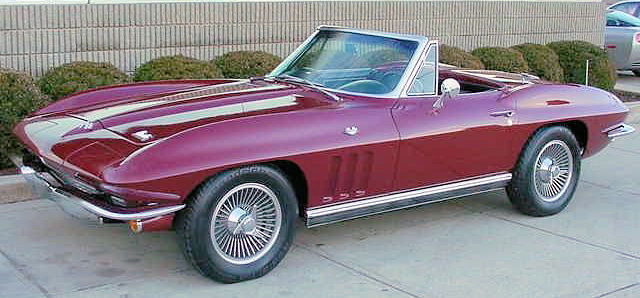
Handsome cast-aluminum wheels with tri-spinner knock-off hubs were planned for the Z06 package and as a separate option. But though often shown in contemporary ads and press photos, they weren't strictly original equipment for '63. Chevy withdrew them after announcement due to casting problems that made the wheels porous, causing air leaks. "Good" wheels became available for '64, and some '63s got them post-purchase, but all Z06 '63s left the St. Louis Corvette factory on ordinary steel rims.
But such bothers were minor because the Sting Ray was as stunning to drive as it was to behold. Though no faster than a '62 Corvette engine for engine, it had an edge in both traction and handling thanks to the new irs. It was more maneuverable, too, with its tighter wheelbase and faster, easier steering (less weight up front). And somehow, Chevy's high-winding small-block V-8 was better than ever in the Sting Ray. Testing a four-speed fuelie with 3.70:1 gearing, Motor Trend's Jim Wright reported 0-30/45/60-mph times of 2.9/4.2/5.8 seconds and a 14.5-second standing quarter-mile at 102 mph. Considering that, fuel consumption was quite reasonable at 14.1 mpg-US (16.7 L/100km) overall.
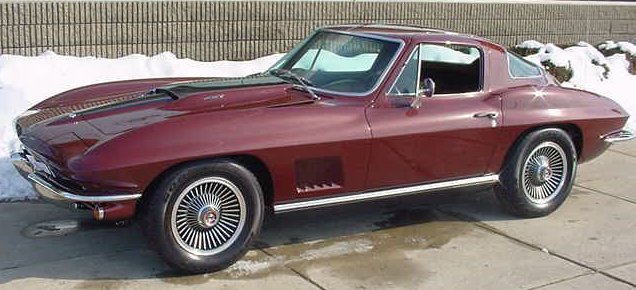
Overall, the Sting Ray emerged as a remarkably balanced and well rounded machine that was both "sports car" and gran turismo. It vividly impressed hard-boiled auto writers. "As a purely sporting car," gushed Road & Track, "the new Corvette will know few peers on road or track...." Echoed Sports Car Graphic: "The ride and handling are great.... You've got to drive one to believe it." Car and Driver judged the Corvette "now second to no other production sports car in roadholding and [it's] still the most powerful." Car Life simply gave the Sting Ray its annual Award for Engineering Excellence.
Better still, the Sting Ray maintained Corvette tradition by offering terrific value for the money. A split-window coupe with the fuelie engine and a few other goodies delivered for around $5300 -- a sensational deal. (When you consider inflation, it would be about the price of a tame Japanese family sedan today.) It's a lot different now: A prime-condition split-window easily fetches $50,000-plus, about the same price as a new Corvette.
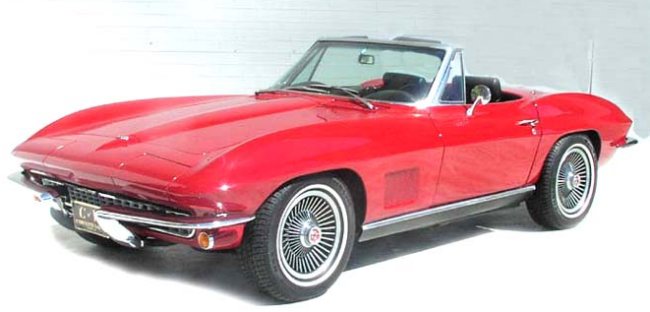
Sales reflected the Sting Ray's exciting combination of sexy sophistication and world-class all-around performance. At 21,513 units, model year '63 production was up 50 percent over 1962, itself a Corvette record. Interestingly, the total divided almost evenly between the ragtop and the new coupe, though the latter would not sell as well again in the Sting Ray years, which might have pleased Mitchell.
Though change hardly seemed needed after this enthusiastic reception, the Sting Ray was nevertheless pleasantly tidied up for 1964. Besides a one-piece rear window for the coupe, Chevy cleaned up appearance by erasing the two fake hood intakes (but not their indentations), making the coupe's fake left-rear-pillar vent functional, and simplifying rocker trim and the standard wheel covers. Steering wheels switched from color-keyed to simulated walnut, and instrument bezels changed from chrome to flat black to eliminate glare.
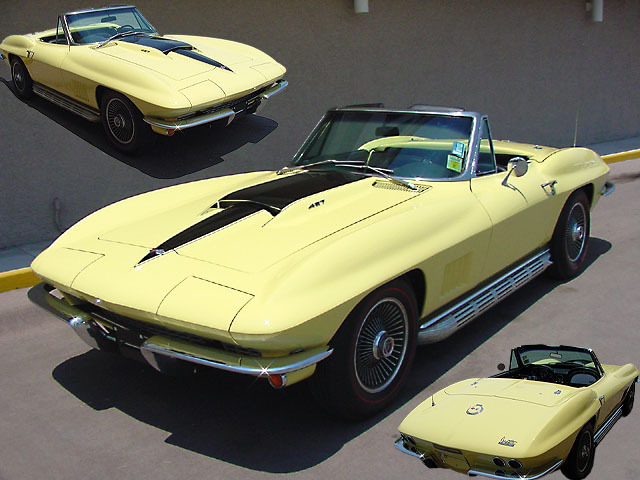
Aiming at a still-smoother ride, Chevy fitted progressive instead of fixed-rate front coil springs wound more tightly at the top, and a rear transverse spring whose leaf thickness varied from within. The result was a wider damping range that better absorbed disturbances without compromising handling. Shock absorbers gained a small bag of cooling freon gas to prevent the fluid bubbling and consequent loss of damping that plagued the '63s. Answering complaints about noise were more sound insulation, revised body and transmission mounts, and additional bushings in the shift linkage.
Drivetrain choices stayed the same, but a big new Holley carb and high-lift camshaft brought the solid-lifter 350-bhp engine to 365 bhp; the 360-bhp fuelie went to 375. Transmissions were ostensibly the same, too, but the Borg-Warner four-speeds gave way to a similar pair of manuals from GM's Muncie, Indiana, transmission plant. Originally a Chevy design and already being used on other GM models, the "Muncie" featured stronger synchronizers and wider ratios for better durability and driveability. Positraction, still a bargain extra at $43.05, went into more than 80 percent of 1964 production. The sintered-metallic brakes were much costlier -- a whopping $629.50 -- but now included the Al-Fin drums.
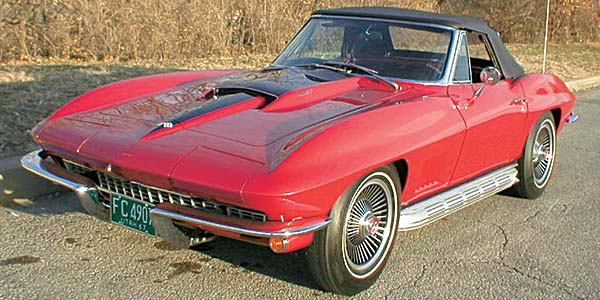
Coupe production dropped for 1964, but convertible sales more than compensated. The grand total of 22,229 was yet another Corvette high, if up only a little from banner '63. The Sting Ray was again tidied up for '65 -- and muscled up in a big way. Styling alterations comprised a smoothed-out hood, a trio of working vertical exhaust vents in the front fenders (replacing non-functional "speedlines"), and restyled wheel covers and rocker moldings. Optional four-wheel disc brakes made news. A four-piston design with two-piece calipers and finned rotors, they upped total swept braking area to 461 square inches, a notable advance on the old drum system's 328 square inches. Per pending federal regulation, Chevy fitted a new dual master cylinder with separate fluid reservoirs for the front and rear lines. Road testers roundly applauded these changes. Sports Car Graphic found the discs "a distinct pleasure to operate .... Repeated stops from 100 mph produced no deterioration in braking efficiency ...." Diehards could still have drums as a $64.50 credit option, but discs were slipped into all but 316 of the 23,562 Corvettes built that model year.
The Sting Ray hadn't lacked for horsepower, but some customers craved more. Chevrolet obliged them at mid-model year '65 with the first Corvette big-block. Officially titled Mark IV but marketed as the "Turbo Jet," this new 396-cubic-inch wedge-head engine immediately ousted the fuelie small-block from the engine roster. It dated from early 1963 and the so-called "mystery" 427 that showed up for the Daytona 500. Retained for production was "porcupine" valvegear -- pushrods set at odd angles. Hydraulic lifters, four-barrel carb, and 11:1 compression added up to a thumping 425 bhp. Premium features included impact-extruded alloy pistons with chrome rings, double-snorkel air cleaner, oversized sump, and a forged crankshaft cross-drilled to lubricate the rod bearings through a full 360 degrees.
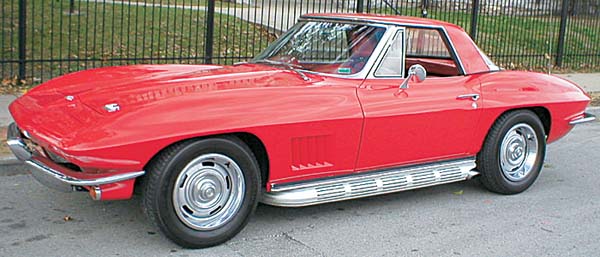
The big-block 'Vette was in short supply during '65, but it was hardly short on go-power. Even with the mild 3.70:1 rear axle it could do standing quarter-mile times of around 14 seconds at 102-104 mph and sail on to nearly 140 mph. To handle its brute force, Chevy threw in stiff front springs and sway bar, a special rear sway bar, super-duty clutch, and a larger radiator and fan. An aggressive-looking hood bulge and optional side-mounted exhaust pipes identified the beast at rest. Though it weighed some 650 pounds, the big-block gave the Sting Ray even better weight distribution, a near-perfect 51/49 percent.
But Ford had an impressive 427 V-8 that Carroll Shelby was stuffing into his sparse two-seat Cobras. Corvette needed a 427 to keep pace, and it got one for 1966. This bored-out 396 delivered 390 bhp on 10.25:1 compression or 425 bhp via an 11:1 squeeze, larger intake valves, solid lifters, and a large four-barrel Holley on an aluminum manifold. Though the latter had the same horsepower as the 396, both 427s packed a lot more torque -- 460 lbs/ft. Of course, horsepower was often understated in those days in deference to insurance companies. Here, 420 and 450 bhp were closer to the truth. Positraction and the close-ratio Muncie four-speed were mandatory options with either 427, but you did get an uprated suspension (basically the 396 package) as well as stouter, shot-peened halfshafts and U-joints, and a higher-capacity radiator and sump.
Any 427 Sting Ray was an incredible performer. With the short 4.11:1 gearset, Sports Car Graphic's example did 0-60 mph in a nearly unbelievable 4.8 seconds and ran up to 140 mph. The modest 3.36:1 axle made things only a bit less sensational; Car and Driver reported 0-60 in 5.4 seconds and a standing quarter-mile of 12.8 seconds at 112 mph.
Big-blocks made 327s less necessary, so '66 offerings were cut to the basic 300- and 350-bhp versions. The small-blocks were still arguably the best all-around Sting Ray engines. They required premium fuel and lacked the 427's rocket-like thrust, but they remained mighty impressive.
Otherwise, 1966 was a stand-pat year save an eggcrate grille insert to replace horizontal bars and a coupe shorn of its roof extractor vents. The relative lack of change reflected plans for a new 1967 Corvette and not a fall-off in Sting Ray demand. Indeed, 1966 ended up being another record-busting year, with volume rising to 27,720 units.
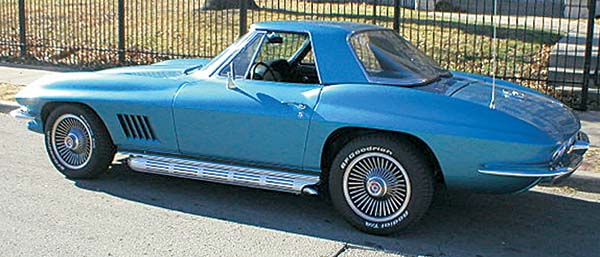
But 1967 brought yet another Sting Ray, owing to last-minute development problems with its erstwhile successor. Not that anyone really minded, for this was the best Sting Ray yet. It was certainly the cleanest. Five small front fender vents replaced the three larger ones, and flat-finish rocker moldings conferred a lower, less chunky appearance. New, and thus unique to the '67 Sting Ray, was a single backup light above the license plate. The lovely cast-aluminum knock-offs were no longer around, but wheel covers gave way to neat, six-inch-wide slotted "Rally" wheels with chrome beauty rings as standard equipment. Upholstery was shuffled, the handbrake migrated from under the dash to between the seats, and the convertible's optional hardtop was offered with a faddish black vinyl cover. Both small-blocks and the 390-bhp big-block (hulking beneath a redesigned hood scoop) were unchanged, but there were two new 427s with triple two-barrel carbs belting out 400 and 435 bhp. The latter, RPO L71, boasted solid lifters and transistorized ignition. It was also available with special aluminum heads (instead of cast iron) and larger exhaust valves as RPO L89, though with the same grossly understated horsepower.